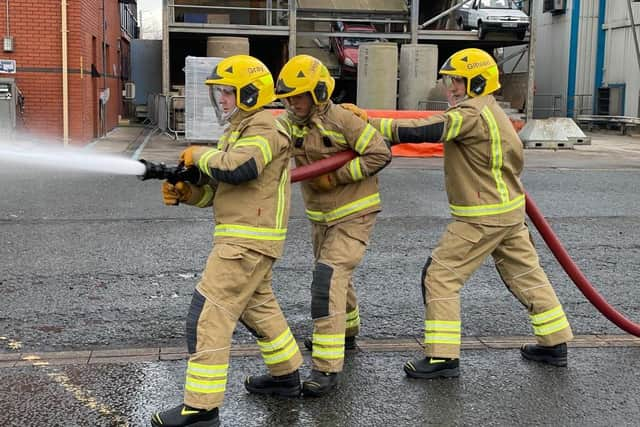Drive to tackle deliberate secondary fires after 35% increase in Tyne & Wear
and live on Freeview channel 276
From April until the end of December 2021, Tyne and Wear Fire and Rescue Service recorded 3,944 deliberate secondary fires, an increase of 35% compared to the previous year.
Secondary incidents are generally small outdoor fires, not involving people or property, and can include blazes involving refuse, grassland and minor fires in derelict buildings or vehicles.
Advertisement
Hide AdAdvertisement
Hide AdOfficers noted last year’s figures were impacted by the Covid-19 pandemic, and as lockdown measures eased increases in activities relating to antisocial behaviour and secondary fires have been reported.


However the overall deliberate secondary fires figure is also 18% higher than the fire and rescue service’s target for 2021/22, which takes into account factors such as the pandemic and longer term data.
Blazes involving loose refuse were reported as the most common deliberate secondary incidents, and fire and rescue service officers stressed they are taking a multi-agency approach to try and clampdown on the issue.
Phil Clark, area manager for strategy and performance, said: “It’s a key component of the work that our district managers and station managers are doing with local authorities and problem solving groups to reduce the occurrences.
Advertisement
Hide AdAdvertisement
Hide Ad“We’ve seen the easing of lockdown restrictions, but we have seen a huge increase in deliberate secondary fires.
“By working together as a multi-agency approach and getting the rubbish off the streets in the first place, there’s nothing there to burn.”
The comments were made after the statistics were presented to Monday’s (February 21) Tyne and Wear Fire and Rescue Authority policy and performance committee.
Examples of work to date include an additional refuse uplift vehicle and crew being allocated to Gateshead to remove combustible materials during the bonfire period, which gathered approximately 21 tonnes across the borough.
In Sunderland and South Tyneside, CCTV, police, fire service and local authority patrols have worked to identify, report and remove loose refuse, along with using social media messaging and targeted letter drops.
Education programmes are also planned on the issue, while it was reported that these are the incidents that firefighters are most likely to be abused at, meaning a reduction would also improve firefighter safety.
Reports showed during the period 1,200 deliberate secondary fires were recorded in Newcastle, 633 in Gateshead, 466 in North Tyneside and 434 in South Tyneside, all higher than the target indicators set for the areas.
Advertisement
Hide AdAdvertisement
Hide AdIn Sunderland 1,181 of the incidents were recorded, which made it the only district recording positive levels lower than its target, as calculated by the fire and rescue service.